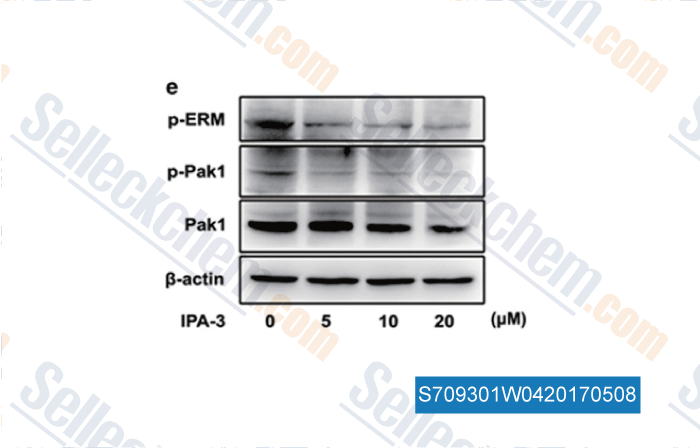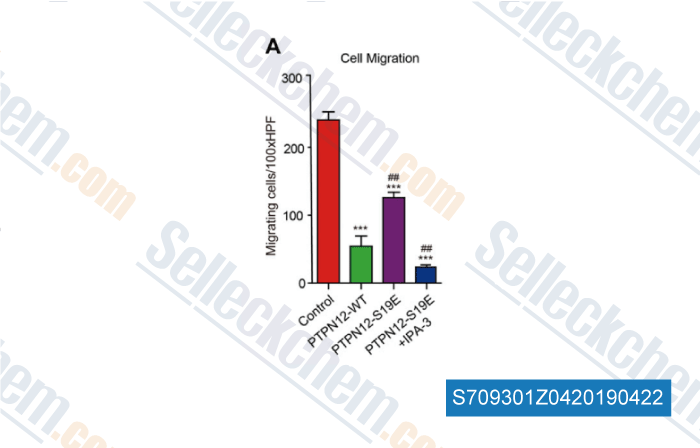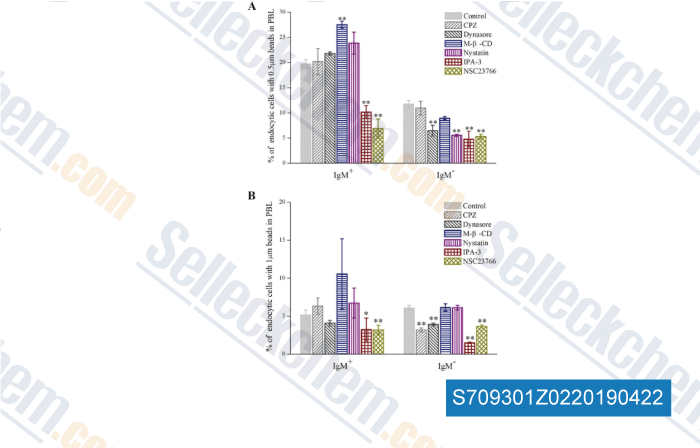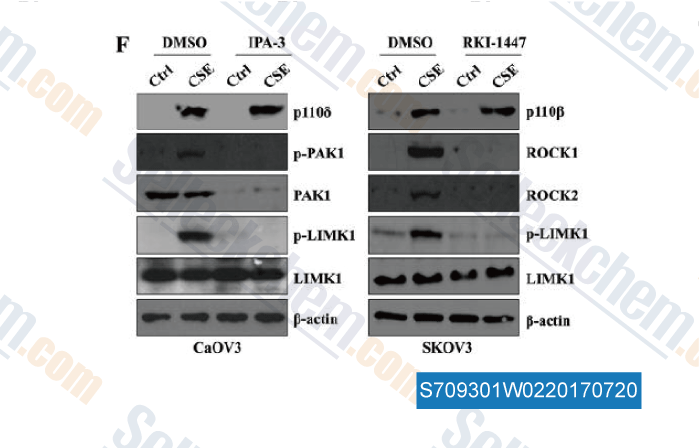|
How to Cite 1. For In-Text Citation (Materials & Methods): 2. For Key Resources Table: |
||
|
Toll Free: (877) 796-6397 -- USA and Canada only -- |
Fax: +1-832-582-8590 Orders: +1-832-582-8158 |
Tech Support: +1-832-582-8158 Ext:3 Please provide your Order Number in the email. We strive to reply to |
Technical Data
| Formula | C20H14O2S2 |
||||||||||
| Molecular Weight | 350.45 | CAS No. | 42521-82-4 | ||||||||
| Solubility (25°C)* | In vitro | DMSO | 70 mg/mL (199.74 mM) | ||||||||
| Ethanol | 7 mg/mL (19.97 mM) | ||||||||||
| Water | Insoluble | ||||||||||
| In vivo (Add solvents to the product individually and in order) |
|
||||||||||
|
* <1 mg/ml means slightly soluble or insoluble. * Please note that Selleck tests the solubility of all compounds in-house, and the actual solubility may differ slightly from published values. This is normal and is due to slight batch-to-batch variations. * Room temperature shipping (Stability testing shows this product can be shipped without any cooling measures.) |
|||||||||||
Preparing Stock Solutions
Biological Activity
| Description | IPA-3 is a selective non-ATP competitive Pak1 inhibitor with IC50 of 2.5 μM in a cell-free assay, no inhibition to group II PAKs (PAKs 4-6). | ||
|---|---|---|---|
| Targets |
|
||
| In vitro | IPA-3 is a non ATP-competitive, allosteric inhibitor of p21-activated kinase 1 (Pak1). PIR3.5 is the control compound of this compound. It prevents Cdc42-stimulated Pak1 autophosphorylation on Thr423. This compound also prevents sphingosine-dependent Pak1 autophosphorylation. It does not target exposed cysteine residues on Pak1. The disulfide bond of this inhibitor is critical for inhibition of Pak1 and in vitro reduction by the reducing agent dithiothreitol (DTT) abolishes Pak1 inhibition by this chemical. It inhibits activation of Pak1 by diverse activators, but does not inhibit preactivated Pak1. This compound inhibits PDGF-stimulated Pak activation in mouse embryonic fibroblasts. [1] It inhibits Pak1 activation in part by binding covalently to the regulatory domain of Pak1. This chemical binds Pak1 covalently in a time- and temperature-dependent manner. It prevents binding of the Pak1 activator Cdc42. This inhibitor binds directly to the Pak1 autoregulatory domain. It reversibly inhibits PMA-induced membrane ruffling in cells. [2] | ||
| Features | IPA-3 binds covalently to the Pak1 regulatory domain and prevents binding to the upstream activator Cdc42. |
Protocol (from reference)
References
|
Customer Product Validation

-
Data from [ , , Cell Death Differ, 2016, 23(1):169-81 ]

-
Data from [ , , FASEB J, 2018, 32(1):73-82 ]

-
Data from [ , , Fish Shellfish Immunol, 2019, 84:138-147 ]

-
Data from [ , , Anticancer Res, 2017, 37(4):1805-1818 ]
Selleck's IPA-3 Has Been Cited by 50 Publications
| A novel PAK1/TCF1 regulatory axis promotes non-small cell lung cancer progression [ Discov Oncol, 2025, 16(1):364] | PubMed: 40111665 |
| Gadd45g insufficiency drives the pathogenesis of myeloproliferative neoplasms [ Nat Commun, 2024, 15(1):2989] | PubMed: 38582902 |
| PAK1-Dependent Regulation of Microtubule Organization and Spindle Migration Is Essential for the Metaphase I-Metaphase II Transition in Porcine Oocytes [ Biomolecules, 2024, 14(2)237] | PubMed: 38397472 |
| A GSTP1-mediated lactic acid signaling promotes tumorigenesis through the PPP oxidative branch [ Cell Death Dis, 2023, 14(7):463] | PubMed: 37491277 |
| A GSTP1-mediated lactic acid signaling promotes tumorigenesis through the PPP oxidative branch [ Cell Death Dis, 2023, 14(7):463] | PubMed: 37491277 |
| PAK1 contributes to cerebral ischemia/reperfusion injury by regulating the blood-brain barrier integrity [ iScience, 2023, 26(8):107333] | PubMed: 37529106 |
| PAK1 Is Involved in the Spindle Assembly during the First Meiotic Division in Porcine Oocytes [ Int J Mol Sci, 2023, 24(2)1123] | PubMed: 36674642 |
| High extracellular glucose promotes cell motility by modulating cell deformability and contractility via the cAMP-RhoA-ROCK axis in human breast cancer cells [ Mol Biol Cell, 2023, 34(8):ar79] | PubMed: 37195739 |
| Activation of CD44/PAK1/AKT signaling promotes resistance to FGFR1 inhibition in squamous-cell lung cancer [ NPJ Precis Oncol, 2022, 6(1):52] | PubMed: 35853934 |
| Delivery of Basic Fibroblast Growth Factor Through an In Situ Forming Smart Hydrogel Activates Autophagy in Schwann Cells and Improves Facial Nerves Generation via the PAK-1 Signaling Pathway [ Front Pharmacol, 2022, 13:778680] | PubMed: 35431972 |
RETURN POLICY
Selleck Chemical’s Unconditional Return Policy ensures a smooth online shopping experience for our customers. If you are in any way unsatisfied with your purchase, you may return any item(s) within 7 days of receiving it. In the event of product quality issues, either protocol related or product related problems, you may return any item(s) within 365 days from the original purchase date. Please follow the instructions below when returning products.
SHIPPING AND STORAGE
Selleck products are transported at room temperature. If you receive the product at room temperature, please rest assured, the Selleck Quality Inspection Department has conducted experiments to verify that the normal temperature placement of one month will not affect the biological activity of powder products. After collecting, please store the product according to the requirements described in the datasheet. Most Selleck products are stable under the recommended conditions.
NOT FOR HUMAN, VETERINARY DIAGNOSTIC OR THERAPEUTIC USE.
